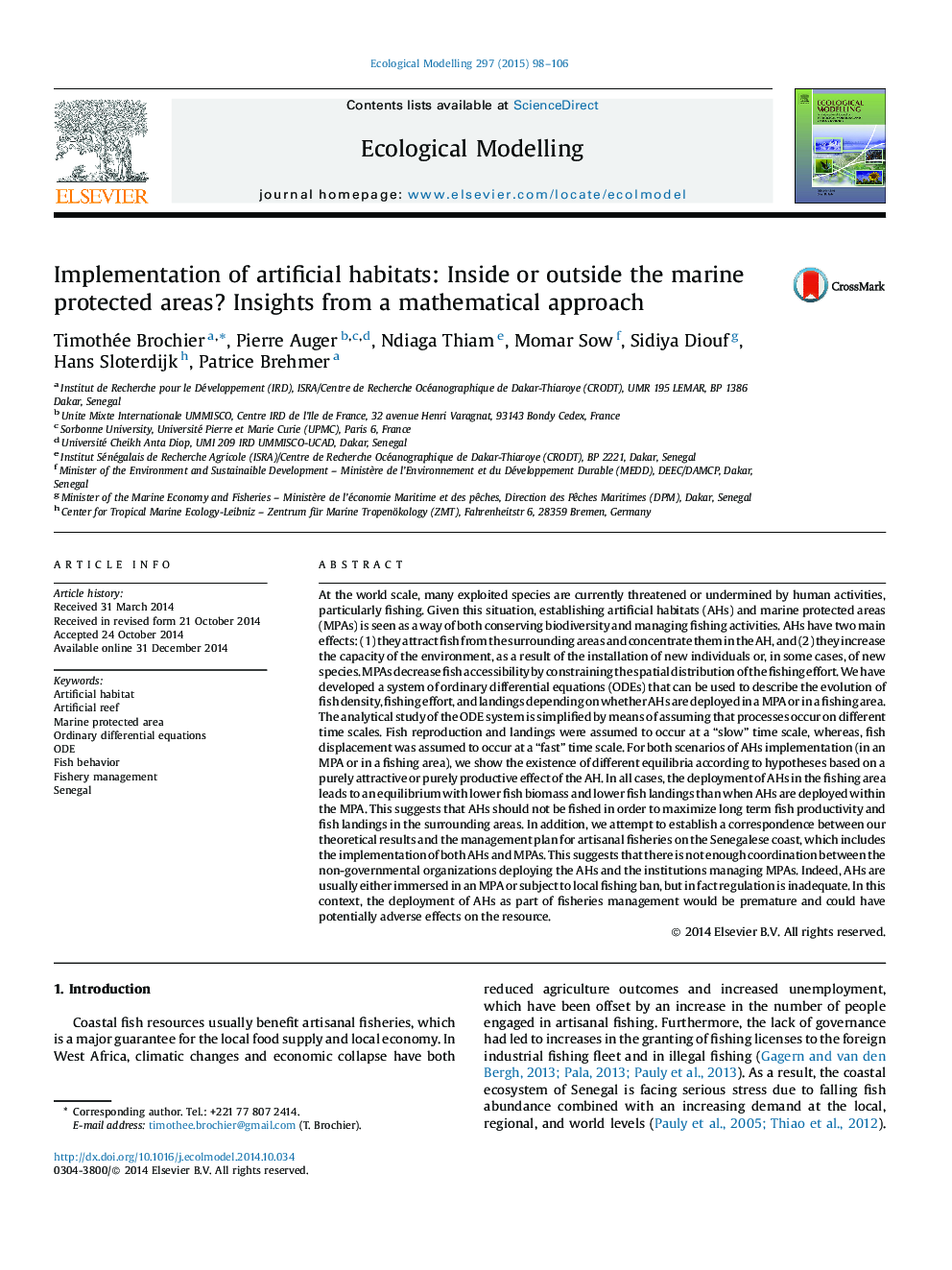| Article ID | Journal | Published Year | Pages | File Type |
|---|---|---|---|---|
| 4375820 | Ecological Modelling | 2015 | 9 Pages |
•How to combine marine protected areas and artificial habitats in fishery management plans?•A mathematical model shows the negative effects on fisheries if artificial reef is deployed in fishing areas.•The case of Senegal suggests that the use of artificial reef in a context of low governance might have adverse effect.
At the world scale, many exploited species are currently threatened or undermined by human activities, particularly fishing. Given this situation, establishing artificial habitats (AHs) and marine protected areas (MPAs) is seen as a way of both conserving biodiversity and managing fishing activities. AHs have two main effects: (1) they attract fish from the surrounding areas and concentrate them in the AH, and (2) they increase the capacity of the environment, as a result of the installation of new individuals or, in some cases, of new species. MPAs decrease fish accessibility by constraining the spatial distribution of the fishing effort. We have developed a system of ordinary differential equations (ODEs) that can be used to describe the evolution of fish density, fishing effort, and landings depending on whether AHs are deployed in a MPA or in a fishing area. The analytical study of the ODE system is simplified by means of assuming that processes occur on different time scales. Fish reproduction and landings were assumed to occur at a “slow” time scale, whereas, fish displacement was assumed to occur at a “fast” time scale. For both scenarios of AHs implementation (in an MPA or in a fishing area), we show the existence of different equilibria according to hypotheses based on a purely attractive or purely productive effect of the AH. In all cases, the deployment of AHs in the fishing area leads to an equilibrium with lower fish biomass and lower fish landings than when AHs are deployed within the MPA. This suggests that AHs should not be fished in order to maximize long term fish productivity and fish landings in the surrounding areas. In addition, we attempt to establish a correspondence between our theoretical results and the management plan for artisanal fisheries on the Senegalese coast, which includes the implementation of both AHs and MPAs. This suggests that there is not enough coordination between the non-governmental organizations deploying the AHs and the institutions managing MPAs. Indeed, AHs are usually either immersed in an MPA or subject to local fishing ban, but in fact regulation is inadequate. In this context, the deployment of AHs as part of fisheries management would be premature and could have potentially adverse effects on the resource.
